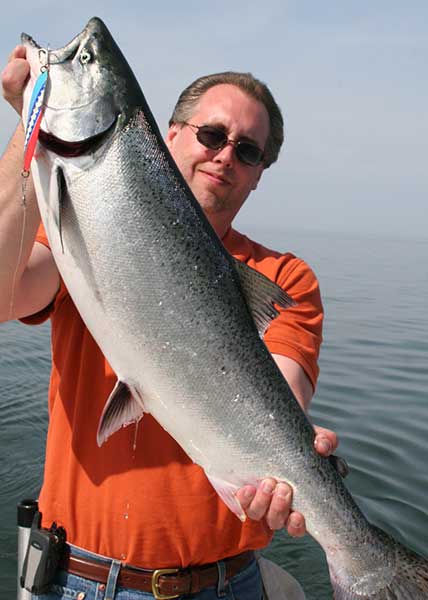 License proposal favors lake Michigan anglers.Hoosiers who enjoy fishing in Michigan better savor it this year.
License proposal favors lake Michigan anglers.Hoosiers who enjoy fishing in Michigan better savor it this year.
If new license fees are approved, it will cost you a lot more in 2014.
License proposal favors lake Michigan anglers.
Gov. Rick Snyder wants the Michigan DNR to reduce its different types of licenses from 227 to 31 and increase its income by raising license fees.
Thats fine. The license structure in Michigan is a bit confusing and its been 17 years since the last increase. DNR officials forecast the plan will raise another $18.1 million for DNR coffers to be used for fish and wildlife projects, including more conservation officers.
But some of the new fees are unfair, especially to non-residents, especially those who dont fish for trout and salmon.
The proposal eliminates non-restricted licenses that currently includes trout and salmon and calls for one all-species license. That means, regardless of whether youre fishing for trout and salmon, youre paying for it.
Whats disturbing most about the proposal is that, while all states ask non-residents to pay more, Michigan a state that touts its fishing in tourism ads is really hitting non-residents hard.
For example, this year Hoosiers can fish for panfish and bass in Michigan with $34 annual license. To fish trout and salmon up there, it is $42. If the plan goes through, youll pay $75 to do either. Residents will pay $25 to fish for whatever they want, which is $3 less than what it currently costs them to fish for trout and salmon and $10 more for those who dont target salmonids.
DNR officials say the price increase puts it in line with neighboring states.
Not for non-residents.
For example, Michiganders who fish in Indiana pay $35 for basic fishing and another $11 for the trout and salmon stamp. Thats $29 less than what Hoosiers will pay to fish Michigan if the proposal goes through. Non-residents who fish Ohio presently pay $35 less while fishing in Illinois is $30.50 less.
In addition, the 24-hour Michigan licenses for both residents and non-residents would jump from $7 to $15. One-day licenses are $9 in Indiana, $11 in Ohio and $5.50 in Illinois.
Michigan tackle dealers near the state line arent happy about the burden the proposal puts on non-residents.
A lot seniors come up here to bluegill fish arent interested in trout and salmon and wont pay $75 for a bluegill license, said Kevin Claire of Lunkers. Separating inland and trout/salmon licenses makes more sense.
Bryan Williams of Trailhead Mercantile in Niles agrees. He says that more than doubling the 24-hour license is out of line.
It will really hurt those businesses near the state line, he said. Not just from the Indiana anglers coming up here, but what about all the people who have cottages and lake houses on all of these lakes? Theyre already paying property taxes on their property and theyre not going to like paying those fees to fish.
Hoosier hunters would take a hit, too. This fall, Indiana deer hunters will pay $138 to hunt in Michigan. In 2014, it could cost $150 for a basic hunting license plus another $20 for an archery permit and another $20 for a doe tag.
While out-of-state hunters pay comparable fees to deer hunt Indiana, the rest of the non-resident licenses proposed for Michigan dont match up with neighboring states.
Non-resident spring turkey licenses will go to $165 (from $69) while waterfowl hunters will pay $150 ($74). Residents will pay $25 and $10, respectively.
Claire says the hunting fees arent bad for residents and non-residents who do a variety of hunting.
If you hunt small game, waterfowl and deer, its not a bad deal for non-residents, he explained. But its not so good for the guys who come to Michigan to hunt one species.
For a thorough breakdown and explanation of the proposal, visit www.michigan.gov.